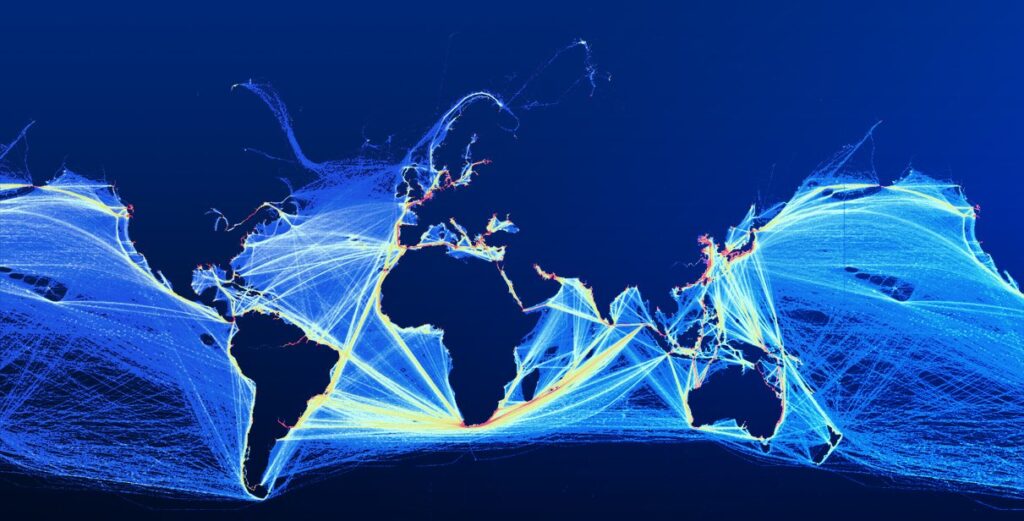We have already spoken about the requirement for shipping to drastically reduce its contribution to carbon emissions and climate change. Decarbonisation targets for shipping were set by the IMO as follows:

It has been clear these targets could not be achieved with the industry fuels in use today and there has been intense debate with respect to which fuels and/or propulsion methods are likely to win out. Ship owners and operators have recently dealt with the fuels transition brought about by IMO 2020 (sulphur reduction) and there are currently a number of challenges including, ballast water treatment, the COVID 19 crew change crisis and associated survey, certification, and trading restrictions. Confusion about future fuels, whilst understandable, is unwelcome and some reports have suggested the absence of a firm direction has contributed to reduced ship ordering.
Each proposed solution engages in advocacy for their place in an enormous market resulting in a lot of “noise”. So where do the industry players stand? In September the International Energy Agency (IEA) reported biofuels, ammonia and hydrogen would meet more than 80% of shipping’s fuel needs in 2070, using around 13% of the world’s hydrogen production. An oil major is backing hydrogen as the dominant fuel in the future. Recently a leading IACS classification society published an outlook for the future fuel, indicating ammonia and methanol would be the winners in the long term, with LNG forming part of the transition. Hydrogen was deemed to be suitable for smaller, localised applications.

Wind power as supplementary or main power source is being increasingly adopted and has attracted some high profile interest. On the other end of the spectrum perhaps, zero carbon nuclear power sources exist, are part of a number of national reduction strategies, but have largely been absent in shipping studies to date. This is surprising considering the progress in the design and construction of micro-reactors, fuels and classification rules for their use.
The success of these alternative fuels depends to a great extent on them being produced from renewables. For example, the IEA reports “Supplying hydrogen to industrial users is now a major business around the world. Demand for hydrogen, which has grown more than threefold since 1975, continues to rise – almost entirely supplied from fossil fuels, with 6% of global natural gas and 2% of global coal going to hydrogen production. As a consequence, production of hydrogen is responsible for CO2 emissions of around 830 million tonnes of carbon dioxide per year, equivalent to the CO2 emissions of the United Kingdom and Indonesia combined.” That does not look like a win.
No wonder we’re confused. Different studies clearly deliver varied results! Quite a problem to solve then and that’s before a global production and supply network is constructed. All future fuels have to address the same challenges; they need to meet emissions reduction targets at the point of use and their infrastructure development; production and distribution, need to be accounted for in calculating the benefits. Given the spread of future fuel options, what should a shipowner consider when planning a new building which could well be around in 2050?
For the last fuel challenge, IMO 2020, some owners opted early to fit exhaust gas cleaning systems (scrubbers) as this would permit continued operation whatever the fuel supply environment turned out to be (and there was considerable uncertainty in the lead up period). Additionally, if the fuel price spread was favourable scrubbers could recoup their costs and improve voyage economics. This solution was not appropriate for all ships however and the majority simply switched to the new low sulphur fuels. Is there a similar “cut through complexity option” with possible upside for some ship owners this time?

Shipping operations have different characteristics; they may trade on fixed routes or varied routes, locally or globally, cargoes may be perishable or time indifferent. Local fixed route trading may provide earlier opportunities to transition to lower or zero carbon options, such as batteries or fuel cells. Remote or autonomous operations may also be possible in some cases and propulsion choices made according to their needs. The choices made by others may also have an impact e.g. if a nation or region insists ships use shore power in port then it might make sense to adopt propulsion technology which makes the most of that provision.
Global traders on varied routes face the most uncertainty with respect to the choices they have to make. Nuclear fuel and its extended independence might appear to be a good option compared with trying to accommodate a range of alternatives. It looks doubtful shipping and society are ready to reduce carbon in this way even if there is a climate crisis. Favouring LNG at the outset, a hybrid, multi-fuel, “burn whatever is available” solution is likely to be adopted in the short to medium term. We are all familiar with the internal combustion engine and some OEM are already pushing these products. The challenge here may be multi-fuel storage capacity as much as providing flexible combustion capability, as the energy densities vary considerably and unhappily favour fossil fuels.
The solution may be something or combination we have not seen yet, but that does not help people having to make decisions today. We will continue to track this important topic. StratumFive’s Podium is agnostic to fuel selection and all features are applicable to any propulsion type and fuel system. We work with data and optimise voyages however they are powered!
Stay connected and safe.